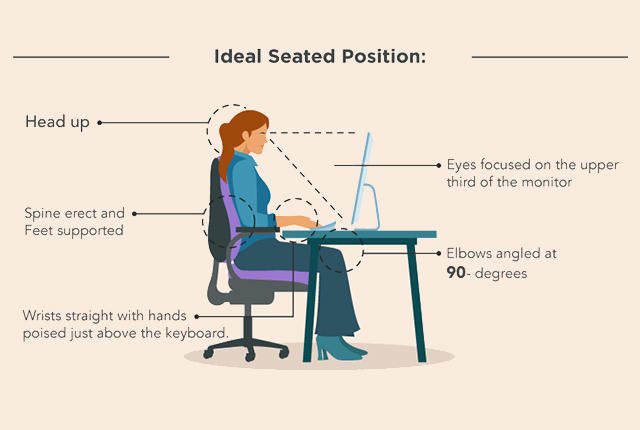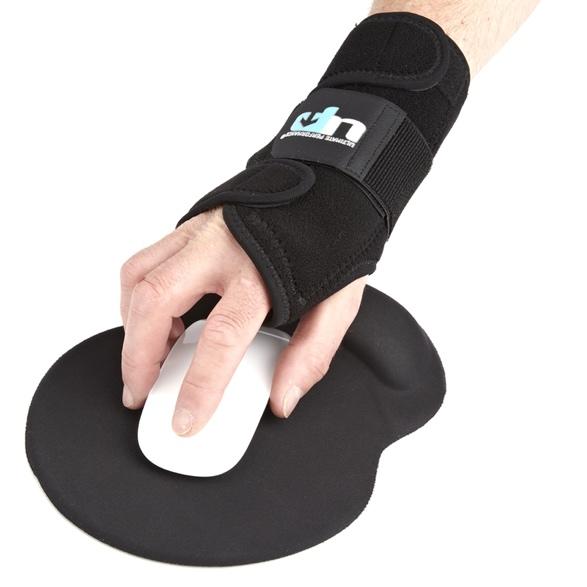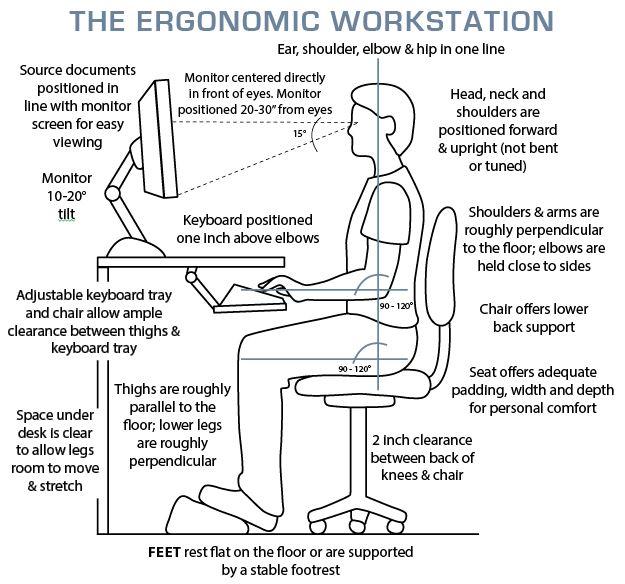Introduction
The growth of technology use, especially advancements associated with data processing with the help of computers, presents significant Human Factor Engineering issues in terms of health. For most employees who work behind their desks to enter data in computers, such issues as poor posture, neck discomfort, pain in hands, shoulders, wrists, and arms seem inevitable outcomes. Carpal tunnel syndrome is among the most complex workplace-associated consequences and represents a condition associated with numbness, pain, and the feeling of arm tingling, which takes place when the median nerve is compressed.
HFE Problem Statement
Many workplace sites fail to address the risks of carpal tunnel development among employees completing the same tasks every day. The poor or absent equipment of data entry stations presents a challenge to HFE improvement due to the lack of attention, appropriate prevention strategies, and funding. This can be attributed to the fact that the comfort of workers is considered less important than the accomplishment of their assignments, which is why physical exertion is the primary reason for CTS development.
Objective and Purpose of HFE Investigation
The purpose of the current investigation is to identify effective preventative measures to target CTS at data entry stations. These measures should be fairly easy to introduce into the workplace and should have support in the research literature in terms of CTS elimination. The objective is to help in the reduction and subsequent elimination of CTS occurrence and improve the overall well-being of workers through implementing suitable procedures.
Review of Related Literature
Carpal tunnel syndrome (CTS) has several causes, which are often overlooked when finding the reasons behind it. Repetitive motions that wrists do over and over can cause the condition, which means that typing may be one of the main influencers of CTS development. Also, underlying health issues such as obesity, diabetes, hypothyroidism, and rheumatoid arthritis increase the likelihood of the syndrome’s occurrence. In severe cases of CTS manifestation, the median nerve can lose its function gradually, leading to individuals experiencing slower impulses in nerves, the loss of feeling in the fingers, as well as the loss of coordination and strength in the hands. In addition, the risks of permanent muscle damage are high when the syndrome remains unaddressed.
Research has identified existing relationships between physical workplace factors, specifically levels of high hand activity and the forceful exertion of the carpal tunnel syndrome. According to the findings provided by the Occupational Safety and Health Administration (2018), work-related instances of carpal tunnel syndrome is the most widely reported neuropathic complication of the upper limb, with its effects on workers being chronically limiting both in the work setting and in personal lives. Specifically, the occurrence of carpal tunnel syndrome accounts for approximately 33% of work-related injury cases (Occupational Safety and Health Administration, 2018).
Studies on CTS prevention have focused on reducing the range of risk factors that are contributing to the condition’s development. For instance, Burt et al. (2013) concluded that both individual and workplace factors increase the risk of CTS development, with forceful exertion being the most widespread cause. Thus, interventions targeted at addressing CTS should decrease the time in which workers spend in physical exertion.
When preventing the occurrence of the syndrome, “the American Conference of Governmental Industrial Hygienists (ACGIH) integrated a threshold limit value (TLV) on the basis of hand activity levels and peak forces” (Bonfiglioli et al., 2013, p. 156). This classification can predict the occurrence of CTS symptoms because of a direct connection between it and the condition’s risk factors.
Approach to Methodology and Investigation
The investigation of CTS prevention in data entry settings will imply the search for high-quality academic, scholarly sources that include peer-reviewed articles, published books, and articles from reputable websites, preferably governmental and professional. In searching for appropriate sources, specific selection criteria were used. The sources had to be dated not later than five years ago, published in scholarly journals, or be produced by reputable publishers. The use of website sources was limited due to the lack of reliability.
Results
Repetitive Hand Movements
When workers sit behind the desk and do repetitive movements with their hands, the pressure on their muscles increases, causing pain and discomfort. The numbness in the thumb, middle, and index fingers point to the first signs of the symptom, contributing to the exasperation of the condition. At data entry stations, manual continuous hand motions represent the majority of physical work. When employers do not provide a safe and supportive environment in which their workers can operate, the number of CPT cases and associated burdens will increase.
Overweight and Obesity
In cases when employees have been diagnosed with such conditions as overweight and obesity, they report a higher prevalence of CPT (Mansoor et al., 2017). This is supported by extensive research, which suggests that individuals in an abnormal weight category have experienced the compression of the median nerve of the carpal tunnel. In addition, diabetic patients are also at a greater risk of developing CPT. This points to the fact that employees should also be aware of their diet and maintain a healthy weight when avoiding CPT in the workplace.
Stress
In a stressful work environment, in which workers have to withstand the pressure of deadlines and increased workloads, the occurrence of CPT can reach high levels. According to Daniels (2014), stress can be a significant contributor to the syndrome’s development as psychological instabilities among individuals are directly connected to CPT as well as other types of pain. “People feel pain more acutely when they are under stress, which means that in workplace settings, paying attention to both physical and mental well-being of employees to reduce the risks of CPT occurrence” (Daniels, 2014, p. 10). By reducing mental stress, employers are more likely to receive fewer complaints of CPT from their workers as well as reduce the high costs associated with workers’ compensation claims.
Certain Medical Conditions
Specific healthcare issues such as rheumatoid arthritis and hypothyroidism can also influence the occurrence of CPT among workers doing the monotonous work of data entry. While the associations between the thyroid dysfunction and CPT are not clear, it is likely that the deposition of the mucinous material on the median nerve increases the syndrome’s risks.
Rheumatoid arthritis, an inflammatory condition that impacts synovial joints, also plays a role in contributing to CPT development by “causing tenosynovitis around the transverse carpal ligament and flexor tensions, resulting in elevation of the pressure within the carpal tunnel, leading to the development of CPT” (Duncan & Kakinoki, 2017, p. 25) Therefore, in combination with straining and repetitive movements of the wrist, the mentioned factors also play a role in CPT occurrence.
Discussion
CPT represents a synergy of different symptoms associated with the strain of the median nerve. Causes such as prolonged physical activity, repetitive movements of the wrist, and various health conditions ultimately increase the likelihood of the increased carpal tunnel pressure, thus causing tingling, weakness, and numbness in the hands. Therefore, CPT is a complex HFE challenge because it can take place as a result of both physical work and underlying healthcare issues such as diabetes or rheumatoid arthritis. When employees are not careful about monitoring their symptoms of CPT and decreasing the adverse impact on the median nerve, the accumulation of damage and changes within the tunnel will inevitably lead to the development of the syndrome (Duncan & Kakinoki, 2017).
The main issue at stake when it comes to finding preventative measures to address CPT is that the syndrome is not fully understood, and several factors simultaneously can play a role in the occurrence of the symptoms. While offering countermeasures to prevent CPT development is crucial, further research is needed to understand the causes of the condition better. This is necessary for limiting the processes that lead to CPT occurrence, especially with regards to professional work.
HFE Recommended Countermeasures
The economic consequences of the condition are vast since employers usually pay for the insurance coverage of their workers. Therefore, the recommended solutions are targeted at both workers and employers of data entry stations. These are strategies that they can follow when trying to prevent themselves from developing CPT. Occupation-related CPT elimination strategies are similar to those applied in non-occupational cases. According to the study by Newington, Harris, and Walker-Bone (2015), significant short-term relief of the syndrome can come from oral steroids, ultrasound, splinting, yoga, carpal bone mobilization, as well as injections of corticosteroids.
Based on the assumed mechanical pathogenesis of CPT, long-term strategies to solve the issue at data entry stations include the rotation of tasks in order to establish a pattern of breaks between the continuous motoric work of wrists and hands, the optimization of tasks to include more efficient equipment, work lay-out, and improved practices, and rehabilitation programs to reduce the adverse impact of CPT on the well-being of workers.
In the setting of data entry stations, the establishment of good ergonomic principles in order to reduce the occurrence of short-cycle repetitive activities, awkward postures, the undesirable load on joints and muscles, as well as static loading. Several countermeasure steps have been developed on the basis of effective ergonomic theory provisions to include the optimization of the workload, the use of appropriate tools, and the implementation of beneficial practices outside the workplace.
Workload Optimization
It is advised for workers at data entry stations to minimize their work effort through sitting in a correct position, which means sustaining a posture that will allow strong muscles to contribute to work (Figure 1). A correct posture thus ensures that the prolonged static loading on muscles does not occur. When a worker operates in an incorrect position, he or she is more likely to experience the forceful rotation of wrist-twisting, its continuous movement from one side to another, and other uncomfortable emotions leading to CPT. In addition to addressing the risks of CPT, a correct seated position will prevent back pain, which is another HFE issue that workers face.

The Use of Tools
In addressing the high risks of workers developing CPT, the use of different tools to reduce the occurrence of the syndrome has shown to be beneficial. Wrist splints have become very popular among workers who experience mild to moderate CPT symptoms (Informed Health Online, 2017). Splints are braces that look like fingerless gloves (Figure 2). They work through stabilizing the wrist in either straight or slightly bent-back in order to reduce the pressure on the median nerve and therefore allows to minimize the adverse impact of CPT. If used full-time, wrist splints can be beneficial for preventing the adverse implications of continuous CPT occurrence, including surgical interventions.

An ergonomically designed workstation at data entry offices is another important took for reducing the likelihood of CPT occurrence. In an ergonomic workplace, the monitor is centered directly in front of the user’s eyes, with the monitor positioned at a 20-30-degree angle from the eyes (Figure 3). The keyboard should be positioned an inch above elbows to decrease the strain in the arms and shoulders. In addition, the space under the desk should be as clear as possible to allow for the legs to move and stretch, thus reducing the muscle strain on the entire body. It is important to mention that some of the insignificant changes such as the chair height adjustment and monitor centering can be done by employees on their own.
However, if their stations have not been initially designed to be comfortable for workers, it is the job of employers to provide a suitable data entry station to ensure that CPT is not an issue that concerns their workers. As seen in the figure below, the ergonomic workstation implies that an employee is seated in a way that limits the pressure on the body and allows for the maximum level of comfort when performing activities behind the computer.

Surgical and Non-Surgical Interventions
Oral corticosteroids and local corticosteroid injections have been used for implementing the symptomatic treatment of CPT. For those prescribed taking an oral medication, being cautious of the side effects is essential due to the high toxicity profile of the substance, which means that its use is feasible only in the rarest and severe cases of the syndrome (Newington et al., 2015). Local corticosteroid injections are recommended for the relief of symptoms that have been taking place for over a month.
Nevertheless, its effectiveness has been debated because symptoms reoccurred within the 8-week period. Thus, surgical interventions have shown better efficacy in the treatment of CPT compared to oral and injected medications.
Tre surgical release of the carpal tunnel is only administered in complex cases of CTS occurrence; for example, when there was significant wasting or weakness of the thenar muscle or in cases when the conservative treatment of CTS did not provide any significant results. The surgery is performed through cutting the transverse carpal ligament in order to decrease the pressure on the median nerve, thus releasing the syndrome’s symptoms. It is predominantly under local anesthetic, which means that patients do not have to stay in the hospital to get the procedure done. After one to two weeks, the stitches are removed; however, the numbness and pain may take up several months to disappear, which is challenging when a patient has to return to work.
Preventative Measures
When experiencing the mild symptoms of CPT, physical exercises such as yoga and stretching have shown to bring relief. While research literature did not investigate the use of such holistic practices to prevent CPT enough, articles in popular well-being publications offer a range of recommendations as to how to relieve the symptoms of the syndrome. According to Stephens (2018), basic wrist therapy, which includes the warming up of fingers, arms, wrists, and shoulders, can relieve the pain in wrists.
Also, the massage of the mentioned areas can serve as contributory therapeutic methods. However, it is imperative to understand that yoga and other exercises should only be implemented in instances of mild pain, and more severe instances of CPT should be addressed accordingly.
As mentioned in the analysis, stress can also increase the likelihood of CPT development among workers, which is why the stabilization of employees’ mental health is among the recommended preventative measures. CPT in a workplace setting requires the attention of the management in order to ensure that employees are treated fairly and that they do not experience severe mental pressure that increases the chances of stress. Preventative measures to avoid stress-related CPT can include holistic practices such as meditation, relaxing activities, short breaks in between work tasks, and so on.
Summary, Conclusions, and Recommendations
Carpal tunnel syndrome presents a significant workplace challenge that does not receive enough attention from employers. Apart from decreasing the performance of workers and causing physical discomfort, CPT is financially challenging because it results in downtime at workstations, costs for treatment, and overall decreased productivity. Occupational factors play a large role in increasing the risks of CPT occurrence and include the exposure to repetitive motions, poor work conditions, the lack of appropriate equipment and support tools, as well as the general absence of awareness associated with the risks of the syndrome.
The HFE program developed to address the issue of CPT at data entry stations proposed several solutions: to optimize the conditions under which employees operate, to use recommended accommodations and tools to decrease the muscle strain of the body, administer pharmacological treatment, implement surgery, and introduce holistic health practices to target the mild symptoms of CPT. In terms of suggested improvement strategies associated with the workload, sitting in a correct position behind a desk is imperative for reducing the impact on the overall body muscles as well as the spine and arms.
Workers at data entry stations should also take breaks to allow for the wrists to relax and do some mild stretching and other exercises. The use of such supportive tools as ergonomically designed keyboards, chairs, tables, and others is also important. Splints can be worn both as a preventative measure and as a treatment option when the CPT symptoms are mild to moderate. When a worker at a data entry station has experienced the severe manifestation of CPT for a prolonged time period, surgical interventions are chosen as the most appropriate solution. Overall, CPT requires further research in terms of suitable management strategies as well as interventions that both employers and workers can implement to avoid the burden of the syndrome.
References
Bonfiglioli, R., Mattioli, S., Armstrong, T., Graziosi, F., Marinelli, F., Fariol, A., & Violante, F. (2013). Validation of the ACGIH TLV for hand activity level in the OCTOPUS cohort: A two-year longitudinal study of carpal tunnel syndrome. Scandinavian Journal of Work and Environmental Health, 39(2), 155-163.
Burt, S., Deddens, J. A., Crombie, K., Jin, Y., Wurzelbacher, S., & Ramsey, J. (2013). A prospective study of carpal tunnel syndrome: Workplace and individual risk factors. Occupational and environmental medicine, 70(8), 568-574.
Daniels, N. (2014). Carpal tunnel syndrome – Causes, prevention and treatment. New York, NY: BookRix GmbH & Co. KG.
Duncan, S., & Kakinoki, R. (2017). Carpal tunnel syndrome and related median neuropathies: Challenges and complications. Boston, MA: Springer.
Ideal seated position. (n.d.).
Informed Health Online. (2017). Carpal tunnel syndrome: Wrist splints and hand exercises. Cologne, Germany: Institute for Quality and Efficiency in Health Care.
Mansoor, S., Siddiqui, M., Mateen, F., Saadat, S., Khan, Z. H., Zahid, M., Khan, H. H., Malik, S. A., … Assad, S. (2017). Prevalence of obesity in carpal tunnel syndrome patients: A cross-sectional survey. Cureus, 9(7), 1519.
Newington, L., Harris, E. C., & Walker-Bone, K. (2015). Carpal tunnel syndrome and work. Best practice & research. Clinical Rheumatology, 29(3), 440-53.
Occupational Safety and Health Administration. (2018). Ergonomics.
Stephens, M. (2018). 6 yoga warm-ups for wrist pain and carpal tunnel syndrome. Yoga Journal.
The ergonomic workstation. (n.d.).
Wrist brace support for carpal tunnel. (n.d.). Web.